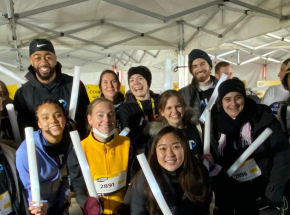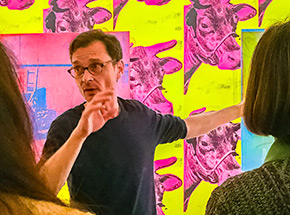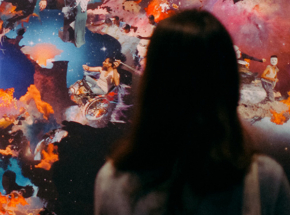- About AUP
- History of AUP
- Mission & Core Values
- Vision and Leadership
- AUP Recognition
- Alumni Success
- Campus Development
- Arts at AUP
- Policies & Guidelines
- Academics
- Undergraduate
- Graduate Programs
- MA in Diplomacy and International Law
- MA in Global Communications
- MSc in Human Rights and Data Science
- MA in International Affairs
- MA in International Affairs, Conflict Resolution, and Civil Society Development
- MSc in International Management
- MSc in Strategic Brand Management
- Find Your Thesis Advisor
- Previous Programs
- Cultural Program
- Faculty
- Summer School
- Research Centers
- The Center for Critical Democracy Studies
- Upcoming Events
- Research Projects
- Fellows’ Publications
- Publishing
- Curriculum
- Community
- Visiting Scholars
- CCDS Highlights
- Atelier de Théorie Politique – Paris
- Critical Theory 101: Future Directions and New Challenges
- Martti Koskenniemi on “The Law of International Society: A Road not Taken”
- Academic Freedom Symposium
- Tocqueville Colloque 2023
- Violent Turns Conference
- Degenerations of Democracy
- DEMOS21 Inaugural Event
- What Demos for the 21st Century?
- The Paris Centennial Conference
- Justice Stephen Breyer
- Civic Jazz - The Launch of the Center
- Past Events
- FR
- The Center for Writers and Translators
- The George and Irina Schaeffer Center for the Study of Genocide, Human Rights and Conflict Prevention
- The Joy and Edward Frieman Environmental Science Center
- The Center for Media, Communication & Global Change
- The Center for Critical Democracy Studies
- Departments
- Academic Resources
- Academic Affairs
- Academic Calendar
- Academic Resource Center
- Library
- Registrar's Office
- Teaching and Learning Center
- Employer Network
- Accessibility & Accommodation Services
- AI@AUP: A Campus-Level Initiative
- Quai D'Orsay Learning Commons
- Paris as Classroom
- ACE Center
- Admissions
- Student Life
- Campus
- Student Leadership & Involvement
- Paris
- Support Services
- Student Development Help Desk
- Student Accounting Services
- Student Immigration Services
- Student Grievance Procedure
- Diversity and Inclusion
- Health & Well-being
- Digital Student Handbook
- News
- Events
- AUP Giving
- Housing Offer for 2025-2026
- IT Services
- Alumni
- About AUP
- History of AUP
- Mission & Core Values
- Vision and Leadership
- AUP Recognition
- Alumni Success
- Campus Development
- Arts at AUP
- Policies & Guidelines
- Academics
- Undergraduate
- Graduate Programs
- MA in Diplomacy and International Law
- MA in Global Communications
- MSc in Human Rights and Data Science
- MA in International Affairs
- MA in International Affairs, Conflict Resolution, and Civil Society Development
- MSc in International Management
- MSc in Strategic Brand Management
- Find Your Thesis Advisor
- Previous Programs
- Cultural Program
- Faculty
- Summer School
- Research Centers
- The Center for Critical Democracy Studies
- Upcoming Events
- Research Projects
- Fellows’ Publications
- Publishing
- Curriculum
- Community
- Visiting Scholars
- CCDS Highlights
- Atelier de Théorie Politique – Paris
- Critical Theory 101: Future Directions and New Challenges
- Martti Koskenniemi on “The Law of International Society: A Road not Taken”
- Academic Freedom Symposium
- Tocqueville Colloque 2023
- Violent Turns Conference
- Degenerations of Democracy
- DEMOS21 Inaugural Event
- What Demos for the 21st Century?
- The Paris Centennial Conference
- Justice Stephen Breyer
- Civic Jazz - The Launch of the Center
- Past Events
- FR
- The Center for Writers and Translators
- The George and Irina Schaeffer Center for the Study of Genocide, Human Rights and Conflict Prevention
- The Joy and Edward Frieman Environmental Science Center
- The Center for Media, Communication & Global Change
- The Center for Critical Democracy Studies
- Departments
- Academic Resources
- Academic Affairs
- Academic Calendar
- Academic Resource Center
- Library
- Registrar's Office
- Teaching and Learning Center
- Employer Network
- Accessibility & Accommodation Services
- AI@AUP: A Campus-Level Initiative
- Quai D'Orsay Learning Commons
- Paris as Classroom
- ACE Center
- Admissions
- Student Life
- Campus
- Student Leadership & Involvement
- Paris
- Support Services
- Student Development Help Desk
- Student Accounting Services
- Student Immigration Services
- Student Grievance Procedure
- Diversity and Inclusion
- Health & Well-being
- Digital Student Handbook
- News
- Events
- AUP Giving
- Housing Offer for 2025-2026
- IT Services
- Alumni
Paris as Classroom
Paris as Classroom
Paris Architecture
Experiencing the Beauty of The City of Light
“Paris is an excellent place to study architecture,” says Professor Anna Russakoff of the Department of Art History and Fine Arts. “You can go from Ancient Rome to contemporary times and always have something interesting to say.” It’s no coincidence that Paris Through Its Architecture is a popular art history course at AUP – it's not only a chance to study some beautiful buildings, but it can also give you a new appreciation for life in the City of Light.
The course is open to students at any level – no art history background is required. Credit can contribute to your general education requirements, as well as to the art history and fine arts majors or minors. “It’s great having people from diverse backgrounds taking the class,” says Russakoff. “The more perspectives we can get, the better.”
“It was the best course I ever took at AUP,” says alumna Laure Moscheni ’15. “Taking it in my first semester allowed me to discover Paris with an artistic perspective that has influenced my view of the city ever since.” As with so many classes at AUP, Paris Through Its Architecture uses experiential learning as a vital complement to the in-class experience. By witnessing buildings in context, you will develop an understanding of the continuing relevance of art history today, as well as an appreciation of how urban settings evolve.
Alongside major monuments such as Notre Dame and Sainte-Chapelle, the tours include diverse examples such as fountains, parks, archways and railway stations. Classes take an interdisciplinary approach; you will develop a basic knowledge of French history as a framework to study the capital’s architectural development. Parisian architecture has been influenced by political and economic forces, religious iconography, France’s secular symbolism and changing trends in urban planning. Cultural figures, such as Mozart and Victor Hugo, have links to the buildings featured.
Russakoff cites two tours of Paris’s Marais neighborhood as a personal class highlight. Though nowadays known for its luxury shopping, the area holds much historical importance. From 14th-century timber-framed houses to the churches and hôtels particuliers of the 17th and 18th centuries, the tour allows students to traverse the architectural evolution of the area. The Hôtel de Sully, close to the Place des Vosges, is an important example for Russakoff. “You have these personifications in relief sculptures of the four elements and the four seasons,” she explains. “And it’s one of the rare buildings where you see baroque decorations such as volute scrolls.”
AUP’s integrated learning approach provides students with the tools they need to view Paris as a classroom – a constant source of curiosity that they can shape to respond to their own interests. “There’s something that happens to a building when you see it and experience it yourself,” says Russakoff. “It stays with you so much more than when you see a reproduction.”
Related
-

Course des Lumières
Paris as Classroom
Read MoreCourse des Lumières
Paris as Classroom
Participants are provided with a light-up baton to carry throughout, symbolizing the movement’s aim of “lighting up the night against cancer.”
-

Professor Vanel
Faculty
Read MoreProfessor Vanel
Faculty
Professor Vanel specializes in mid-twentieth century art and has worked on a diverse range of artists and topics.
-

Arab World Institute
Paris as Classroom
Read MoreArab World Institute
Paris as Classroom
Paris is a vibrant city for not only Western art but also Asian, African and Middle Eastern art.



